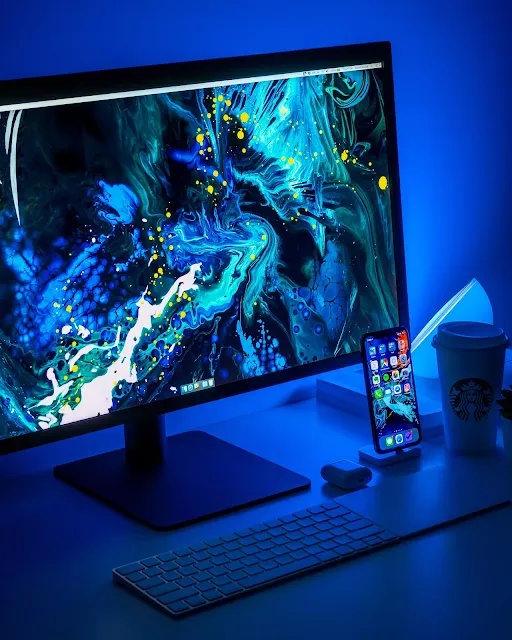 |
| 1080i vs 1080p |
The first thing to think about when buying a television is the resolution. You want to get the greatest picture quality possible by purchasing a 1080p or 1080i television. There are other factors to consider, but this should be your top priority. Before you buy anything, be sure you know what resolution you require.
A home theatre or entertainment system with high-definition resolution provides the greatest possible TV viewing experience. You'll be able to see everything. It will appear to be a film rather than a television show!
If you want the greatest picture and clarity, 1080p is the best option. This signifies that your screen contains 1,080 horizontal pixels, which allow for progressive scanning of images. As a result, everyone should be able to enjoy a crisp, clear image on their television displays!
Difference Between 1080i and 1080p
According to reports, 1080p and 1080i are two commonly used HD certified monitors that efficiently deliver high-quality pixel images. To put it another way, the letter 'p' denotes progressive scans, whereas the letter I denote an interlaced scan of the display. Furthermore, both are capable of displaying graphics at a resolution of 1920 x 1080 pixels.
The distinction between 1080p and 1080i is that 1080i could be a progressive scan screen with no frame length or scan kind, however, 1080p is AN reticular monitor with a frame length and scan kind. There square measure over 540 vertical lines and 1920 horizontal pixels in 1080i, whereas 1920 horizontal pixels and 1080 vertical pixels square measure gift in 1080p.
A 1080i sequence employs a consecutive frame resolution and scan type to provide a 16:9 display ratio to its viewers. 1080i is the broadcast standard for both high-definition television and high-definition movies. The screen's horizontal lines are alternately tallied for odd and even lines, giving the impression of a high resolution.
Working of 1080i Resolution
 |
| 1080i |
The interlaced display of the 1080i format is perfect for people who want to watch the high-quality video with motion blur and low light visibility. It was developed in response to the limitations of old Cathode Ray tube televisions in terms of image presentation, but this new approach boosted the quantity of information we could view on the screen while preserving excellent quality!
The trendsetting 1080i is a Full HD display specification with an equitable distribution of frame resolution and scan type across the screen. It's known as an interlaced display because it has odd and even horizontal lines intermittently strewn across the screen. HD video formats, generally referred to as 1080i, use square pixels.
In 1080i, motion phases can be collected at a rate of 50 to 60 fields per second. Furthermore, 1080i is used by the majority of HD channels on satellite and cable transmissions, resulting in a natural and lucid image. Between the first pixel displayed at the top of the screen and the last pixel displayed at the bottom, old CRTs had a large delay.
As a result, when compared to modern TVs with fast response times, there was a brightness difference in contrast between CRT and LCD displays, such as plasma which did not display the "CRT Effect.
Working of 1080p Resolution
 |
| 1080p |
Full HD or FHD is another name for 1080p. This technology, on the other hand, creates a high-quality display with a 1920 pixel horizontal resolution and a 1080 pixel vertical resolution. 1080p devices, according to a poll, give the best viewing experience and resolution for viewers.
This is in contrast to the 1080 format, which displays an image that is 1920 pixels wide by 1080 pixels high. A field corresponds to each pixel on the screen, and each field has something significant going on.
Today's computer screens, whether LED TVs or UHD 4K TVs, use progressive scanning; OLEDs can now display 8k resolution with these same features, and some can even go 10 times higher!
The "interlace flicker" effect, which darkens the image while exposing sharper details, is eliminated with 1080p. Color reproduction enhances the vitality of images by providing deeper blacks and brighter whites!
1080i Vs. 1080p which is better
For the time being, 1080i should serve if you want high-quality resolution without spending a lot of money on a new HDTV. You'll receive incredible clarity and detail even if the resolution isn't as high as 1080p. Consider a brand new 4K Ultra HD set if you have a larger budget and want the best possible viewing experience from your screen.
It contains twice as many pixels as 1080p and provides significantly more clarity without sacrificing the diagonal dimension of the screen! You won't notice any jagged lines or "blocks" in photographs because of the high quality because everything will appear natural!
If you want to watch films at 3840 x 2160p at 60 Hz, you'll need to switch to a later generation of TV, preferably one with HDMI 2.0, because most current model TVs only offer 24/30 Hz.
Conclusion:
As you can see, if you want to bring home the best viewing experience for your money, a 1080i TV isn't the ideal option. It does look slightly better than 720p due to the lack of interlace flicker, but only by a small margin.
If money isn't an issue, this will suffice; if it is, go for a 1080p television; if you want the best of the best experience, go for a 4K Ultra HD screen or even one that supports HDR! You're going to appreciate the visual quality and clarity you'll get with this.

Post a Comment